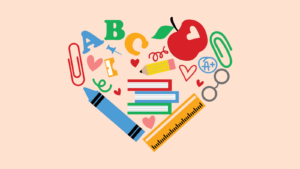I vividly remember Irma. She was the life of the class. She had the widest smile and the loudest giggle. Always armed with pen and notebook under her arm, she was ready to do battle—and win!—against the formidable English language.
Or so it seemed.
Every year, for a week in the summer, my TESOL class opened free ESL classes to the community as part of the last week of the course study. Every year, Irma was back, making her way with light steps to her usual spot; front and center. And every year, without fail and complaint, she was placed in the “beginner” class.
First lessons in a beginner class are mostly predictable: greetings, introductions, basic subject-verb-object/present tense structures, and so forth. The fourth summer in, one of the student teachers had just delivered a Krashen-worthy lesson that checked all the right boxes. Meaningful interaction? Check. I plus 1? Check. Affective filter? Check. Natural order? Check. Before ending the class, the student teacher reviewed the new—(new for everyone but Irma)—phrases they’d both learned and practiced in role-playing that day, “Goodbye. See you tomorrow!” being one of them. On the way out the door, with a notebook full of copious notes she’d copied from the whiteboard and the same determined smile she’d come with, she said in bright, flawless Spanish, “Adios! Hasta mañana!”
Why wasn’t Irma, who at the time had been living in the United States for over twenty years, progressing past the beginner class? The answer is clear. Because Irma is a textbook example of the identity crisis so many, if not all, adult English Language Learners (ELL) face. It makes no difference in the number of times we as teachers stress the importance of using English outside of the classroom to our students. They are not forgetful, nor are they defiant. Their first language is simply in their DNA. It is part of their identity. It is who they are.
For just a moment, let’s remove ourselves from behind the podium and put ourselves in the student’s seat. After all, if you are a language teacher, you have more than likely at one time, or another been a second language learner yourself.
Do you remember the first time you spoke a sentence in the foreign language you were studying? It’s an unsettling feeling, right? There are strange sounds coming out of your mouth, you feel like you are back in eighth-grade coding to a friend in a clandestine pidgin you’ve created or that you’re an onstage actor trying to pull off an accent—without the costume or makeup—to convince a skeptical audience. It doesn’t sound like you. You’re an imposter — a fraud.
We add to the mix that language and culture are deeply intertwined—inseparable. If an adult is resistant to learning a new culture—a new way of life—that will inevitably, unquestionably inhibit their language acquisition.
So how do we, as second language learners, get past the identity crisis?
Firstly, know what brought you into the classroom.
Pinpoint that one driving need that pushed you through the doors of the classroom for the first time. Was it the survival in a new country that, for whatever reason, had become your new home? Was it to find a community in said country? Was it serving a business clientele with a different language background or transitioning a current profession overseas? Whatever the answer, it determines both your motivation and the length at which you pursue your goals. Need is the only thing that can drive a student to learn. The greater the need, the greater the chance of productive language acquisition and the greater the possibility of a student pushing past the crippling identity crisis. The teacher can provide the right environment for the student, foster intrinsic motivation, build amongst the class a safe sense of community, and hand them all the right tools to accelerate the learning process. Still, the teacher cannot create the need.
Secondly, profoundly and honestly evaluate your willingness to adapt—to at least some degree—a new culture.
If you harbor unwelcome feelings about the cross-culture, this will significantly hinder your progress in language acquisition. If your goal is fluency, you must be willing to embrace the culture in conjunction with the language. Language and culture, after all, are two sides of the same coin. You cannot have one without the other.
But don’t take without giving. Remember, the language classroom should be one of cultural exchanges. You don’t have to leave your driver’s license at the door. Be willing to share who you are and the life experiences that have made you who you are with your teacher and peers. The ESL classroom is a place where students can find acceptance and appreciation for the valuable wealth of cultural exchange they bring to the table, a place where people won’t shake their heads at less-than-stellar English or a Spanish-laced timbre. This sense of community is perhaps one of the greatest rewards of the ESL classroom. Please take full advantage of it.
Ok. You are the teacher again. Here’s the take-away: don’t blame yourself if your adult student doesn’t progress as quickly as you think they should. Of course, we should be open to evaluating things we can change or improve to foster more exceptional learning outcomes. Still, the student’s need is ultimately what drives them forward in their language journey, past the obstacles of an identity crisis, and the psychological barriers that come with it. However, if the need is strong and the classroom community stronger, our students will be able to overcome these obstacles. And without a doubt, Irma will be back in her place next year, front and center.




